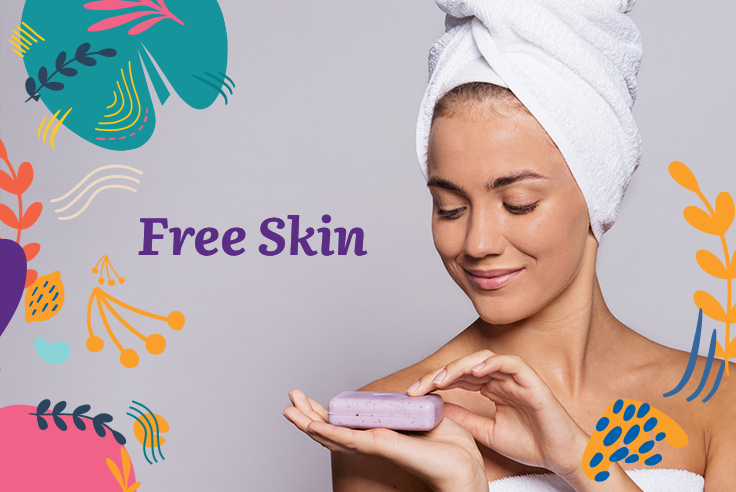Turn your face to the sun and the shadows will fall behind you .
If the word free also means independent, then free skin is independent skin that does not depend on any special care or treatment to solve problems. It needs no camouflage, it avoids artificiality, it is simple and natural. It is a skin able to show itself unconstrained, naked, without risking anything. It suffers from nothing and attracts nothing but admiration. It is a free, beautiful and glowing skin, always facing the sun and whose shadows fall behind it.
A free skin needs products only for cleansing, moisturizing and nourishing.
But there are people who do not use cosmetics at all. They truly have the freest skin – free from problems often caused by inappropriate cosmetics that dominate today’s market. But especially after a certain age the skin does benefit from a little outside help.
The reality is that conventional cosmetics do not allow the skin much freedom. In their design, the emphasis is on safety assessments, as it is assumed from the outset that they have toxic potential, so it is more important to avoid harm than to do good. More recently, the focus is also on animal welfare, prioritising it over the skin welfare for which the products are designed. Animal testing is avoided, and rightly so, because animal skin should not suffer for the sake of human skin.
From a business perspective, ever since the cosmetics industry began, companies have generated a large profit margin between the manufacturing, marketing and distribution costs of a product and what consumers eventually pay. In 1932, a small bottle of Ardena Skin Tonic sold for 85 cents. Mrs Arden’s profit? 80 cents. But consumers were willing to pay the price because of the perceived benefits, so it seemed like a fair deal on both sides.
Today’s scenario is similar, the main difference being that cosmetics ingredients can now be almost entirely synthetic (bearing in mind that a moisturiser contains at least 80% water), and there is far less genuine benefit to the consumer.
Nowadays cosmetics create allergies and other issues which can be exacerbated by a general lack of care for one’s own health and beauty. The need has arisen for a multitude of products covering a multitude of problems. A range of cosmetics must necessarily contain products for skin which is atopic, sensitive, dehydrated, dry, oily, acne-prone, ageing or dull, as well as treating redness, pigmentation spots, large pores, blackheads, wrinkles etc.
Moreover, the big companies offer numerous alternatives for just one need. For example, for cleansing or make-up removal there is cleansing milk, cream, oil, balm, gel, foaming mousse, micellar water, cleansing wipes or sticks, scrubs and exfoliants etc.
Here are the ingredients in the cleansing product used by Diana: Water\aqua\eau, tridecyl stearate, tridecyl trimellitate, dipentaerythrityl hexacaprylate/hexacaprate, butylene glycol, glyceryl stearate, cocos nucifera (coconut) oil, caprylic/capric triglyceride, silica, cetearyl alcohol, ceteareth-20, sorbitol, hexyldecyl stearate, bisabolol, disodium cocoamphodipropionate, triethanolamine, oleth-10 phosphate, caprylyl glycol, 1,2-hexanediol, stearyl alcohol, carbomer, disodium edta, phenoxyethanol, potassium sorbate, chlorphenesin.
Because the product didn’t live up to its promise of “clear, smooth skin” and even caused discomfort, she swapped it for an Evantyne handmade soap created with only quality natural ingredients that gently cleanses her face without causing adverse reactions. An artisanal soap created by cold saponification with added oils (superfatted) to protect the skin’s hydro-lipidic film is the simplest and least expensive cleaning solution. After washing apply a tonic and the regular cream.
Soap is the result of a reaction between an acid (oils and butters) and a base (sodium hydroxide). The “by-product” glycerine is retained in the composition and provides hydration. Simple as that!



